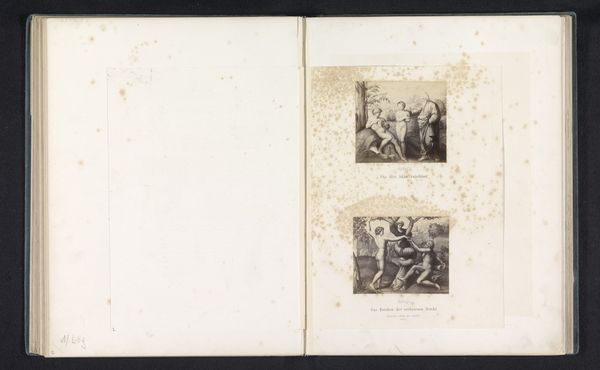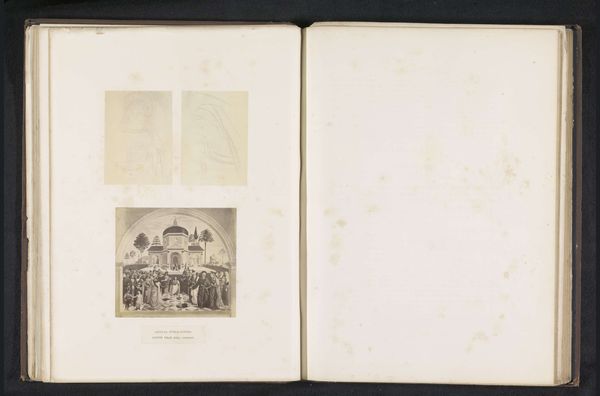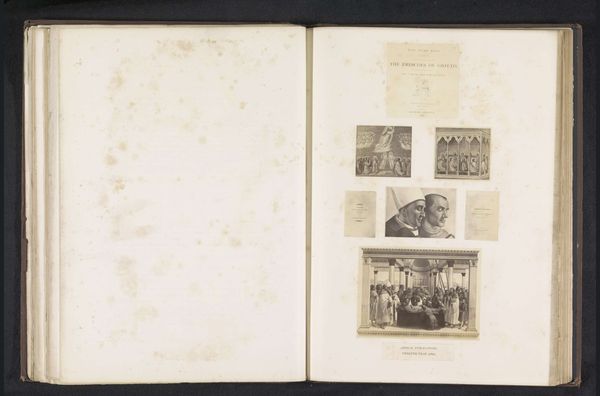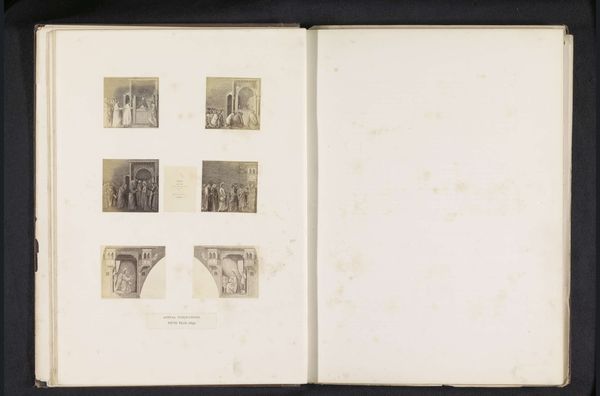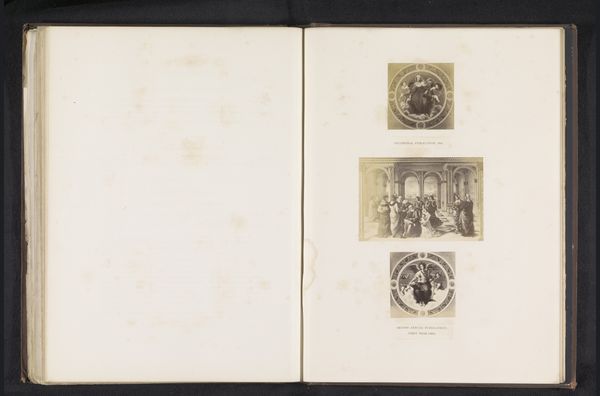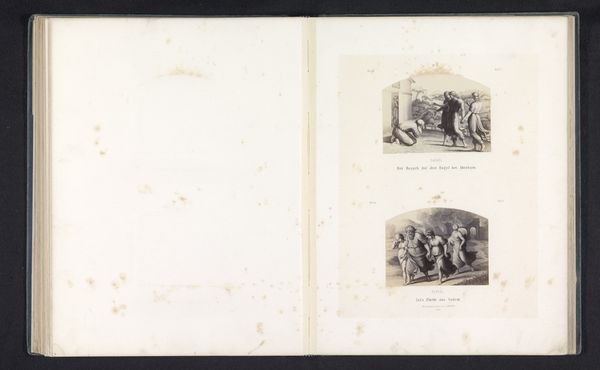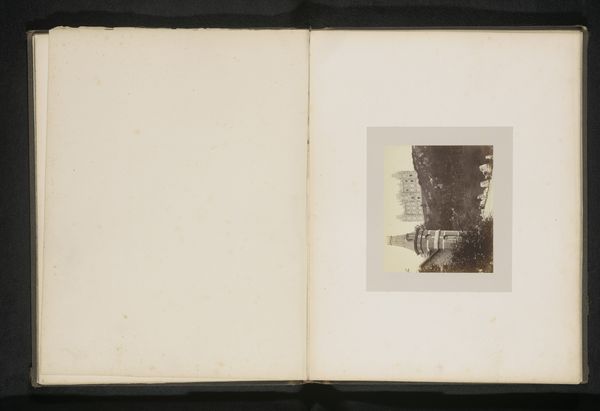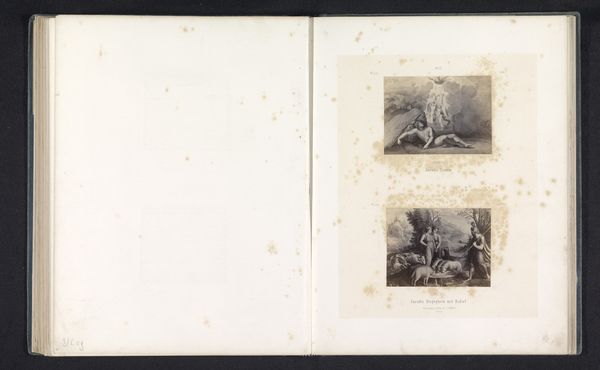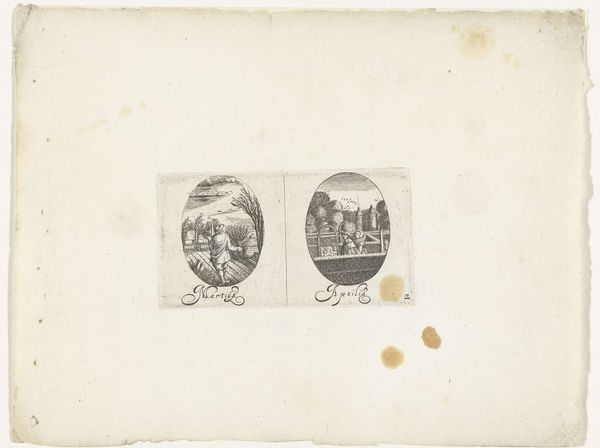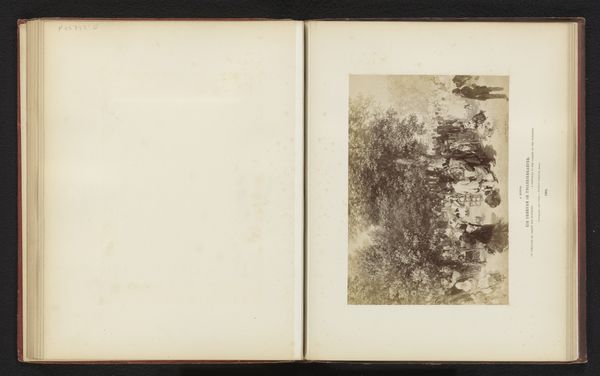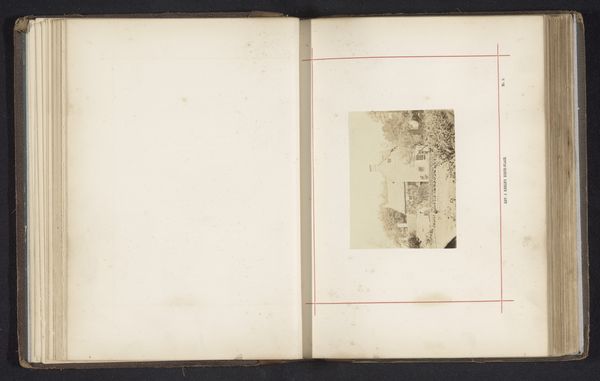
Twee fotoreproducties van een publicatie door de Arundel Society met een schilderij van Filippino Lippi before 1869
0:00
0:00
print, photography
# print
#
book
#
11_renaissance
#
photography
#
italian-renaissance
Dimensions: height 378 mm, width 290 mm
Copyright: Rijks Museum: Open Domain
Curator: This fascinating object is a photographic reproduction from a publication by the Arundel Society, predating 1869. It features paintings by Filippino Lippi. My first impression is one of faded grandeur, like glimpsing fragments of lost stories. Editor: Faded grandeur is an apt description. The compositions, even in these miniature photographic reproductions, hint at complex narratives. What do you make of their symbolic language? Curator: These are more than mere depictions; Lippi utilizes a rich visual vocabulary to convey layers of meaning, speaking to a deeply ingrained Christian cultural memory. Take the procession scene, perhaps depicting a biblical narrative – it acts as a mirror reflecting societal values and spiritual aspirations. Editor: Absolutely. Looking at the composition, I see a clear emphasis on classical structure, almost a geometric rigidity. There’s a measured control in the arrangement of figures, and how they interact. Does that measured arrangement not contribute to the gravitas you read there? Curator: Indeed! The geometric structure and formality create a sense of solemnity, heightening the importance of the narrative being portrayed. It elevates the subjects to archetypes, making them more relatable to audiences across time. But, the reproduction process changes things, doesn't it? It removes us another layer. Editor: Agreed, photography’s intervention changes the material impact significantly; a painting is quite distinct as an art object from this. What’s more intriguing is what this tells us about 19th-century art appreciation—the dissemination of canonical works through reproduction. What do you see there? Curator: That tells us so much about what society wanted to engage with. Reproductions such as these acted as powerful cultural touchstones. And it illustrates how these artworks played a vital role in constructing shared historical narratives and bolstering collective identities. The copies allowed Italian Renaissance art to inform artistic choices internationally, becoming an important language across Europe. Editor: And on that note, I'm noticing how even these fragmented images encourage consideration of original forms and what they still signify even as cultural artifacts translated again and again. Curator: Quite right. Despite the distortions of time and reproduction, this photographic copy manages to offer a potent lens through which to view art history and its resonance.
Comments
No comments
Be the first to comment and join the conversation on the ultimate creative platform.
